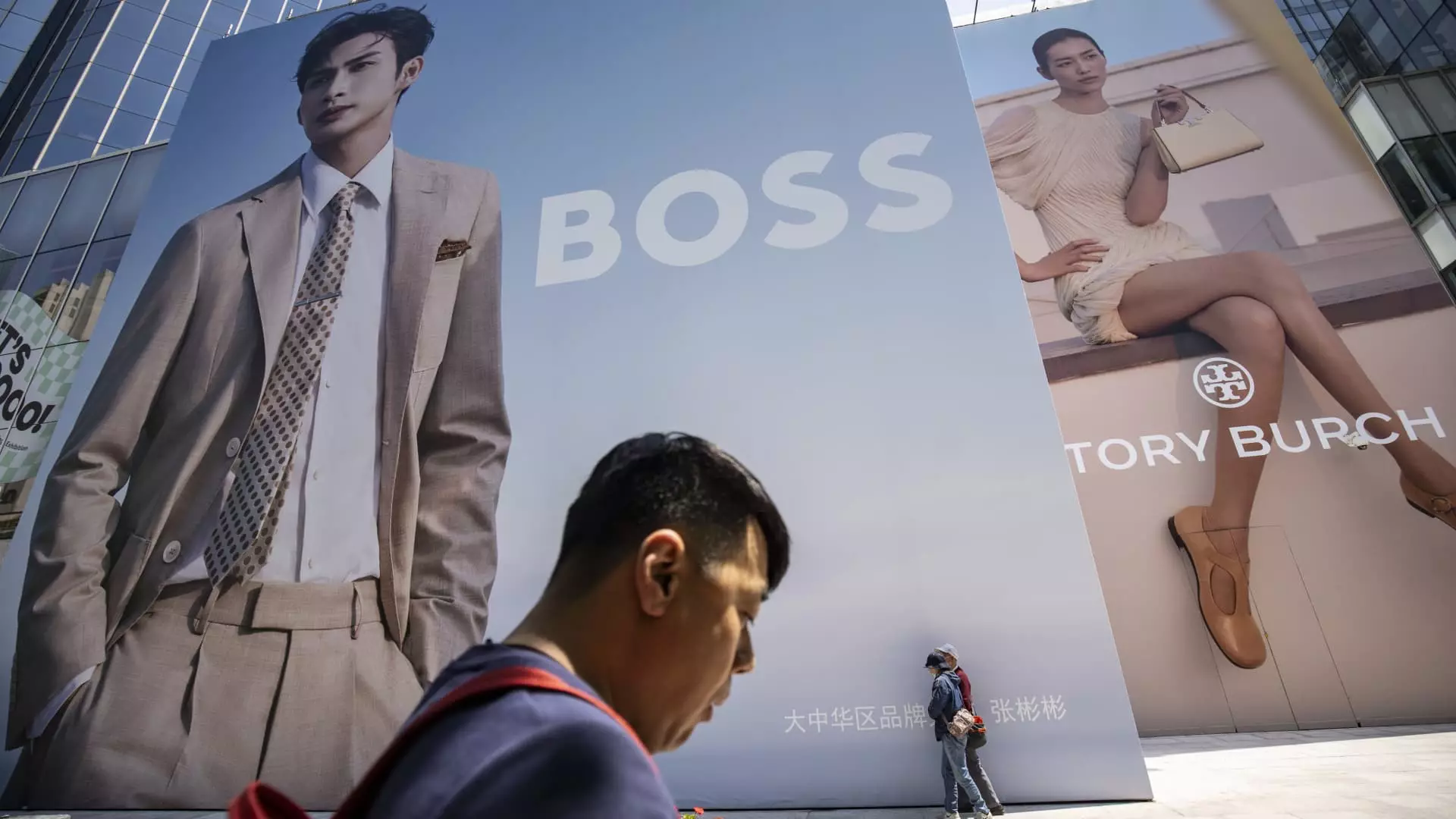The landscape of European luxury stocks experienced significant turbulence recently, primarily as analysts signal a worrisome outlook for demand in the luxury sector. On a recent Monday, stocks of key luxury players, particularly in the U.K. and Germany, faced steep declines driven by shaky consumer confidence, most notably amongst affluent Chinese consumers, whose spending patterns have hit a snag. This shift is alarming given the pivotal role that the Chinese market has come to play in the global luxury market over the past decade.
Hugo Boss, a notable German luxury brand, suffered a 4% drop on the Stoxx 600 index after being downgraded by Bank of America Securities from a ‘buy’ to an ‘underperform’ rating. The analysts indicated that the brand was grappling with an evolving consumer environment, suggesting that the latter half of the year may usher in heightened discounting and declining revenues. The post-pandemic era saw an initial surge in luxury consumption, particularly in 2022, but now industries are witnessing an inevitable pullback.
Global Economic Influences on Luxury Spending
The report by Bank of America Securities also pointed to a sequence of consumer normalization across different nationalities, starting with American buyers before trickling through Korean, European, and Japanese consumers. Now, as pressures mount globally, all luxury consumers are feeling the pinch. This indicates a broader systemic challenge rather than isolated issues within individual brands. The analysts voiced concern that the once-reliable backbone for luxury sales—the Chinese consumer—is now exhibiting signs of weakness, leading to a description of shoppers as being “all shopped out.”
With such a noteworthy consumer demographic retracting their spending, it raises red flags for the luxury sector. The forecast of a potential 1% revenue decline in 2024 for European luxury firms paints a gloomy picture. In tandem, the recent climb of geopolitical tensions and macroeconomic uncertainties in regions such as the U.K. and China heightens concerns for brands struggling to retain their consumer base.
Brands such as Burberry have not escaped unscathed. An approximately 3% drop followed a downgrade from Bank of America, along with a new target price that reflects their cautious stance on the luxury market. In stark contrast, luxury juggernauts like LVMH and Kering have also witnessed a shift from ‘buy’ to a neutral rating, with industry experts advising investors to approach these companies with caution.
As these brand-specific implications unfold, it becomes clear that the luxury goods market is traversing a critical juncture. Shares of LVMH recently dipped to their lowest levels since July 2022, highlighting the difficulty faced not just by individual brands, but by the luxury sector as a whole. The perceived strength of once elusive aspirational buyers and young fashion enthusiasts is now coming into question. The very consumers that brands like Burberry have sought to attract may be less reliable than previously thought.
Brands aiming to redefine their positioning amidst market fluctuations face daunting challenges. Jon Cox, a prominent figure in European consumer equities, remarked on the fragile state of the luxury goods industry and the hurdles brands must overcome to capture and maintain consumer interest. Aspirational consumers are notoriously fickle, leading brands that have attempted restructuring, such as Burberry, to face extraordinary pressures. Cox advocates a long-term view, endorsing the potential for brands like Kering and Gucci to rebound—but recognizing that investor patience is waning.
There is a growing worry that a potential revival of tariffs or additional trade barriers, particularly from China, could further complicate the dynamics within the luxury market. Analysts such as Susannah Streeter highlighted the notion that luxury brands could become collateral damage in the broader geopolitical tug-of-war. The possibility of fresh tariffs targeting luxury items could stifle demand and curtail sales, especially if luxury goods are viewed as non-essential in comparison to other industry necessities.
As European luxury brands confront an environment of fluctuating consumer confidence and shifting purchasing patterns, the focus remains on how well they can adapt to these changing tides. While brands remain optimistic for potential recoveries, the prevailing atmosphere suggests a prolonged period of challenges ahead. Luxury firms must recalibrate their strategies to engage a discerning consumer base that is now more hesitant to indulge. The future of the industry hangs in the balance, resting on the ability of these brands to address not just their immediate struggles, but also to contemplate the impacts of evolving global economic realities.

Leave a Reply